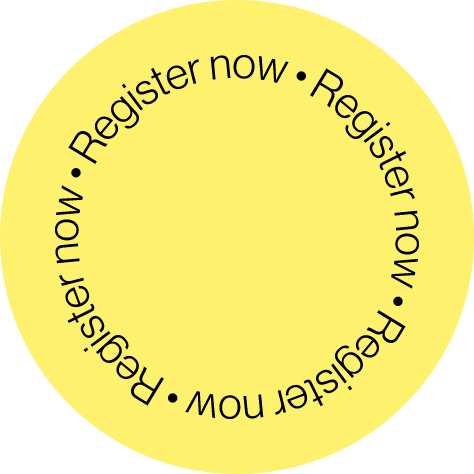
It’s been a tough year for all of us, from business owners like myself to people seeking job opportunities with new employers or even in new industries. Mental health has long been a priority to me, particularly as mental health problems run in my family. This year, I’ve witnessed firsthand the impact of our changed world and new ways of working on employers and employees alike. At the same time, companies continue to hire and people continue to look for work. The pandemic has presented us all with an opportunity to reflect on what’s important and how we can seek happiness in our lives and careers.
At Bamboo Crowd, I’ve been fortunate to have inspiring calls with thousands of candidates over the last several months. And so, in the spirit of collaboration and kindness during this challenging time, I present this second article to share experiences and strategies for those seeking work in new fields or roles.
And now, let’s talk about how you can sidestep into a new career or industry in this challenging year.
The lockdowns and pandemic have forced many people to re-think their career paths. Some have realized that the job they’re doing just isn’t fulfilling and isn’t what they want to do. We spend a significant amount of our life working, so doing something that leaves us feeling fulfilled has a tremendous positive impact on our mental health. Being in the wrong job can take a toll. While some have had the privilege to think hard about what they want to do, others have been laid off or find themselves working in fields that show very slow signs of returning to normal. The events, hospitality, and travel industries have all been impacted and will see slow progress toward pre-COVID levels of activity.
So, how exactly do I sidestep into a new field?
The first thing to say is that entering a new field is not always easy, and that’s OK. We are often pigeonholed into specific trades, particularly if it’s something we have done for a long time. So, before you start your journey, ensure that this is what you want to do. To find success, follow your passion and be laser focused on where you want to sidestep..
Once you’ve found this clarity, here are my five steps for sidestepping success.
Build your Story
To encourage employers to consider your holistic experience, it helps to have a compelling story. What makes you you, and why are you looking to sidestep into this new path? Your story should be engaging, clear, and interesting. You also need to be familiar and confident with your story. Research your chosen field and ask yourself these questions:
- What part of my background or experience qualifies me for this role?
- What makes me different from other candidates who might apply to this role?
- What do I bring to the table and what type of impact can I have?
- What led me to want to do this? Why am I passionate about it?
- Long-term, what do I hope to achieve by going down this path?
Once you’ve found the clarity to answer these questions and craft your story, you’ll find it easier (and perhaps more rewarding) to identify the right opportunities as well as put together your resume and cover letter.
To encourage employers to consider your holistic experience, it helps to have a compelling story. What makes you you.
Be targeted, persistent, and stay organized.
Don’t send your resume to every opportunity you can find. Trust us – this is a bad path to go down and it devalues your experience. The real secret to sidestepping into a new field is to be targeted. Research the market and find companies that resonate with you and your chosen path. Remember, you don’t always have to go for the big players like Google, Facebook, and AirBnB. There are countless opportunities out there, and you will have a lot more success and traction if you remain focused and realistic. Here are some questions to ask yourself when selecting the right target company:
- What connection points are there between the company and my own experience? For instance, if you work in healthcare and want to join a startup in a client services or sales role, perhaps you target healthtech. In this scenario, the immediate and differentiated impact you bring is empathy for the customer, an understanding of how to communicate with people in that world, and unique insights into the market. Try to target companies where there is a similar and strong connection point.
- What about the company’s values or culture resonates with me? Research the company’s career page and existing staff and start to find common themes and threads that connect with you.
- What impact can I have? Try to find something unique about your experience that will add value. For example, similar to our healthcare/healthtech example, maybe the company lacks a staff member that has worked in healthcare – would they benefit from this diversity of experience and perspective on the team? Think commercially and strategically about what you can bring to the table and what gaps you can fill.
Once you have your target list, make sure you stay organized and track your progress. Use Airtable, GoogleSheets, or a similar platform to track your progress. This will help you stay on top of those you’ve contacted. For some roles you may need to contact multiple people at the same organization until you get a response.

Remember, you don’t always have to go for the big players like Google, Facebook, and AirBnB. There are countless opportunities out there, and you will have a lot more success and traction if you remain focused and realistic.
How to Build your Resume and Cover Letter
I won’t go into detail on how to actually craft your resume and cover letter as there are copious resources available for you to consult. What I will share, however, are some common things that I often see people miss as they sidestep into new fields.
- Add an introduction to your resume/CV. An introduction is a great way to set the reader up for the rest of your resume. Be clear about what you’ve done and what you’re looking for. Remember that story you wrote about yourself? Use elements of it in your introduction! The intro should be no more than two sentences and it should be a punchy summary about you. An example (again using our healthcare/healthtech scenario) might be: Healthcare professional with five years of experience supporting patients and clients with expert care seeks to bring knowledge, passion, and experience into a client-facing healthtech role. I bring empathy, compassion, and understanding for the pain points of your customers and I want to support you in delivering value and impact.
- Use the right language. This isn’t necessarily about “buzzwords”. Rather, it’s about word choice and how your resume is written. I’ve worked in many sectors and I’m continually surprised by how people in different industries position their resume. Review job descriptions, study company websites, and read job adverts into your chosen field. How do they write about the role? How do they write about themselves? For instance, in our previous example, we talk about “customers” but does the company use the word “clients” or “users” instead? This is a small tweak but word choice really matters – it shows you speak the same language and that you truly understand what they do. These minor tweaks can make all the difference when someone is reading your resume or cover letter.
- Keep it short and targeted. This goes for both your resume and cover letter. Don’t be tempted to write everything down. Your resume should be one page and your cover letter should be two short paragraphs. Find creative ways to fit it all on one page and, if you’re stuck, find a template you can use.
- Show that you’ve been proactive. Have you taken courses or are you part of a networking group in your chosen field? Demonstrating proactivity is a great signal and you should seek opportunities to mention this involvement from the very start of the process. You can add a “courses” or “interests” section to your resume to describe some of the things that you’re doing. And, if you could stand to be a bit more proactive, start looking into relevant courses, communities, and events today. There are many interesting and free opportunities, virtually or locally.
Make sure to prep for interviews as much as you can and go into each with the mindset that this is a learning experience. Ideally, you want to reduce pressure so that you can perform well.
Be comfortable with rejection. In fact, embrace it!
Rejection is an opportunity to learn and get better. Keep in mind that sidestepping into a new field is not an easy path. Be realistic yet kind to yourself and understand that it will take some time to make your sidestep. If you’re getting interviews, great! That is a very good start. Make sure to prep for interviews as much as you can and go into each with the mindset that this is a learning experience. Ideally, you want to reduce pressure so that you can perform well. If you’re still in the early stages of your search, then look at every interview as a learning opportunity and a chance to gain more experience and feedback. You will get there!
Lastly, solicit feedback from your interviews. This will help you improve and get better in your search. Interviewing really is a skill and it takes time to hone your craft.
Be Active
Remaining active and engaged is everything. You should be doing something toward your goal daily – even if it’s just for 20 minutes. Activities may include:
- Research a company
- Connect with others on LinkedIn
- Speak to a recruiter
- Enroll in a course
- Attend an event (there are many free virtual options)
- Check out networking apps like Shapr
- Speak to a friend about their interview experience
- Research the field
- Read news in this space
- Review job descriptions
- Tweak your CV or cover letter
- Prep for interviews
And there you go! These are my hopefully-helpful tips! Sidestepping into a new career path is challenging yet achievable. And the outcome of your efforts can be immensely rewarding. Above all else, remember to be patient and realistic. The process can be time-consuming and long, but you will find success at the end of it.
I am happy to review your resume or cover letter. All you need to do is email me at alex@bamboocrowd.com and let me know:
- Your background.
- What field you’re trying to get into. Or, even better, two or three adverts you’ve applied to or plan to apply to.
- Why this field?
- And, of course, attach your resume and/or cover letter.
I should be able to respond to most people within 72 hours.



